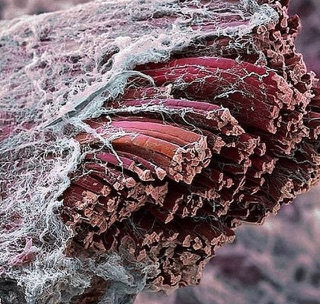Physical Therapy Info Health Tips
Our Integrated Physical Therapy blog, your go-to source for physical therapy articles and holistic health information. We provide expert insights, practical physical therapy tips, and the latest developments in the field. Whether you're recovering from an injury, managing chronic pain, or looking to improve your overall well-being, our physical therapy blog covers a variety of helpful topics.
Our goal is to empower you with the information you need to take an active role in your health and recovery. Ready to schedule an appointment and take control of your health? Contact Integrated Physical Therapy at 305-967-8976.
Melting Scar Tissue and Promoting Healing: Understanding Myofascial Release
 What is Myofascial Release?
What is Myofascial Release?
Myofascial release (MFR) is a specialized physical therapy technique that targets the fascia, the connective tissue surrounding muscles, bones, and organs. This method involves applying gentle, sustained pressure to the fascial system to eliminate pain and restore motion. It is particularly beneficial for individuals suffering from chronic pain, stiffness, and mobility issues.
The Role of Myofascial Release in Melting Scar Tissue
Scar tissue can form as a result of injury, surgery, or chronic inflammation, leading to restricted movement and discomfort. Myofascial release helps to "melt" or break down this scar tissue by:
- Increasing Tissue Flexibility: The sustained pressure and stretching involved in MFR help to soften and lengthen the fascial tissue, making it more pliable and less restrictive.
- Enhancing Blood Flow: By improving circulation to the affected area, MFR promotes the delivery of oxygen and nutrients essential for tissue repair and regeneration.
- Facilitating Lymphatic Drainage: This technique aids in the removal of waste products and toxins from the body, which can accumulate in areas with scar tissue, further promoting healing.
Myofascial Release and Interleukin 8 Production
 Interleukin 8 (IL-8) is a cytokine, a type of signaling molecule that plays a crucial role in the body's immune response and healing processes. Research has shown that myofascial release can stimulate the production of IL-8, which contributes to:
Interleukin 8 (IL-8) is a cytokine, a type of signaling molecule that plays a crucial role in the body's immune response and healing processes. Research has shown that myofascial release can stimulate the production of IL-8, which contributes to:
- Anti-Inflammatory Effects: IL-8 helps to reduce inflammation in the body, which is often a significant factor in pain and stiffness associated with scar tissue.
- Promotion of Tissue Repair: IL-8 attracts immune cells called neutrophils to the site of injury, which are essential for clearing out damaged tissue and facilitating the healing process.
- Regulation of Immune Response: By modulating the immune response, IL-8 ensures a balanced healing environment, preventing excessive inflammation that can lead to further tissue damage.
Integrating Myofascial Release into Your Healing Routine
Incorporating myofascial release into your regular physical therapy routine can provide numerous benefits for those dealing with scar tissue and chronic pain. Here are some tips for getting started:
- Consult with a Professional: Always seek guidance from a qualified physical therapist or practitioner experienced in myofascial release to ensure proper technique and safety.
- Consistency is Key: Regular sessions, whether in a clinical setting or through self-myofascial release techniques at home, are crucial for achieving long-term benefits.
- Listen to Your Body: Pay attention to your body's response to MFR. While some discomfort is normal during the process, sharp or intense pain should be addressed with your therapist.
Myofascial release is a powerful tool for breaking down scar tissue and promoting the production of interleukin 8, leading to reduced inflammation, enhanced tissue repair, and improved mobility. By integrating MFR into your therapeutic regimen, you can take significant steps toward a pain-free and active lifestyle.
Explore the potential of myofascial release and experience the benefits of this innovative therapy for yourself. Your journey to better health and mobility starts here!
(The information about Interleukin 8 (IL-8) in the context of myofascial release and its benefits is derived from general scientific understanding and studies in the field of immunology and physical therapy. Specifically:
- Anti-Inflammatory Effects: IL-8 is known to play a role in the inflammatory response by attracting neutrophils to sites of inflammation, which helps reduce inflammation through various mechanisms.
- Source: Cytokine literature and studies on IL-8 functions, such as "Interleukin-8 (IL-8), a chemotactic and inflammatory cytokine" (PubMed, National Center for Biotechnology Information).
- Promotion of Tissue Repair: IL-8's role in attracting neutrophils is crucial for clearing out damaged cells and tissues, thus promoting repair.
- Source: Research articles on IL-8 in tissue repair, such as "The Role of IL-8 in Tissue Regeneration and Repair" (Journal of Immunology Research).
- Regulation of Immune Response: IL-8 is involved in modulating the immune response to ensure balanced healing, preventing excessive inflammation.
- Source: Immunology textbooks and reviews, including "Cytokines in the Immune System" (Journal of Immunology).)


